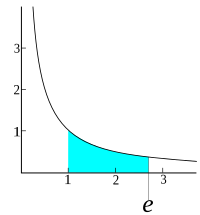
Photo from wikipedia
Considering the increasing interest in the realization of carbon-neutral and RE100 systems, and the expansion of the supply of renewable energy through large-scale floating photovoltaic systems (FPVs), this study designed… Click to show full abstract
Considering the increasing interest in the realization of carbon-neutral and RE100 systems, and the expansion of the supply of renewable energy through large-scale floating photovoltaic systems (FPVs), this study designed large-scale bifacial FPVs for maximum power density. Moreover, the estimated power generation was compared and analyzed according to the installation methods of the conventional monofacial PV module facing south (Mono-S), bifacial PV module facing south (Bi-S), and bifacial PV module facing east and west (Bi-EW). Using the proposed design method, the power generation per unit area for FPVs was 17.87% to 36.08% higher than that of the conventional installation method. In addition, this method can contribute to gird stability by decreasing the peak power around noon and increasing power generation during low irradiation and can be applicable to marine photovoltaics(MPVs).
Journal Title: IEEE Access
Year Published: 2023
Link to full text (if available)
Share on Social Media: Sign Up to like & get
recommendations!